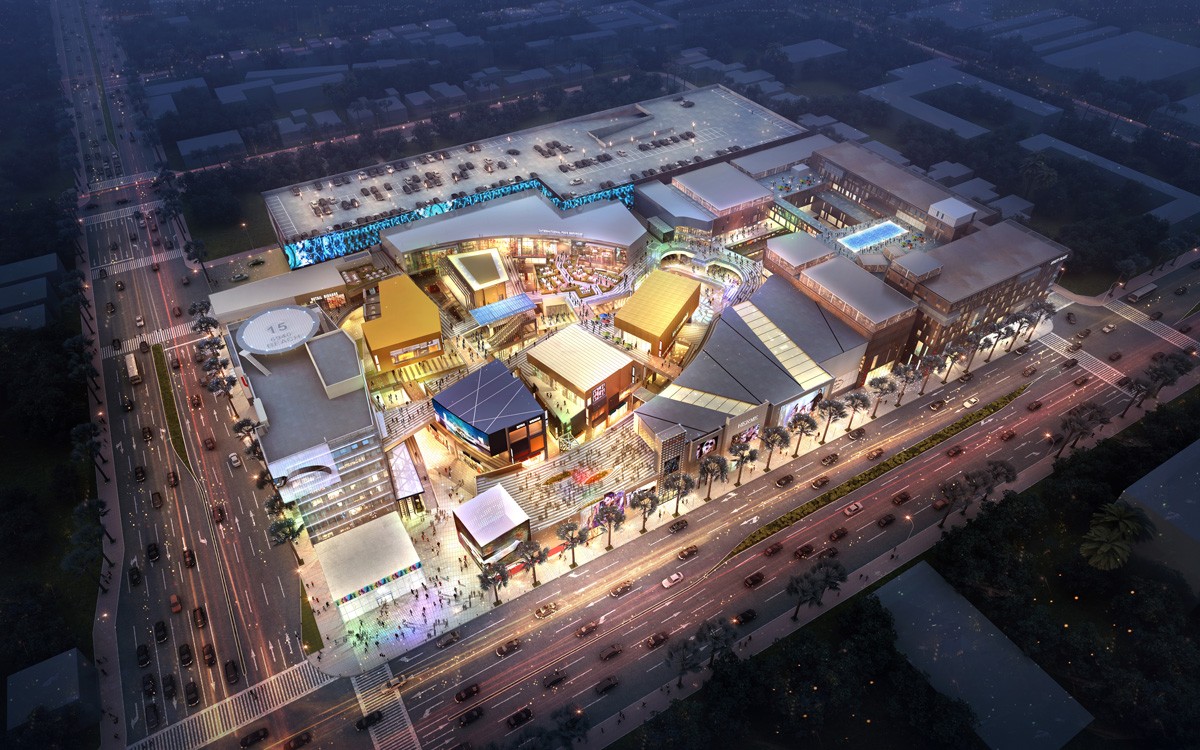
Every morning, Joe Gruppie makes himself a cup of coffee at his Buena Park home of five years before heading out to work. And when he opens the front door, he’s greeted by a drab wall with four stories of exposed steel beams rising from it.
“It’s pretty ugly and just gets uglier with time,” he says of what one day will be a 172-room Hilton anchoring the Source, a $400 million mega retail center being built next to Gruppie’s neighborhood. But right now, it’s an empty shell that’s too perfect a metaphor for the Source’s costly, problematic saga.
“It was seismic!” Gruppie recalls of the structure’s initial drilling. “Things were falling off the shelves and breaking in our home.”
All the racket unleashed a swarm of insects, forcing Gruppie to hire a bug man. Overgrown vegetation in vacant lots slated for development attracted opossums, raccoons, skunks and stray cats who spilled over into back yards. These wild animals clawed away at Gruppie’s cats, one of whom has endured five surgeries costing thousands of dollars.
“The developers said back in 2008 that they would provide us with tarps because of the dirt, pay half of our electricity bill because we couldn’t open our windows, and power-wash homes,” says resident Ray Rodriguez. He doesn’t have the promises in writing, but he insists on holding the developers to them. He does have a 2014 letter from the Source’s attorney, Michael Black, reacting hostilely to his “threat” to sue if the project didn’t give $5,000 to affected homes in the neighborhood for dust and structural damage.
Such headaches have been common since 2012, when M+D Properties broke ground on the Source and vowed to finish the retail phase by 2014. But promised big-box retailers such as Macy’s and Forever 21, restaurants including the Yard House, luxury-apparel outlets such as Diesel, and entertainment such as Regal Cinemas and Lucky Strike bowling lanes never came.
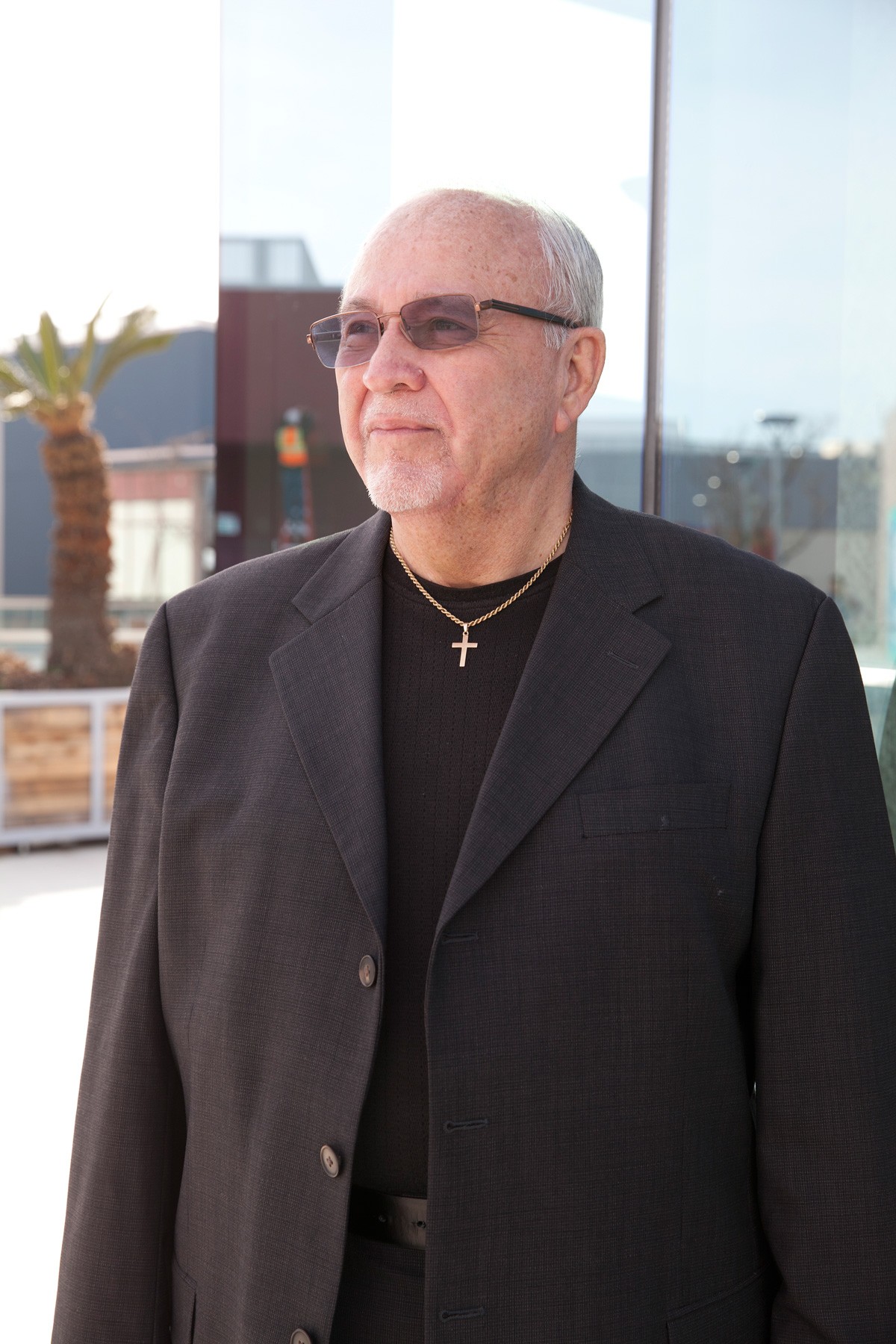
M+D secured $80 million in foreign funding by way of the EB-5 Immigrant Investor Program, which promises visas in exchange for foreigners who invest $500,000 to $1,000,000 in a U.S. commercial enterprise or create 10 jobs in the economy. Thanks to those investors, nearly all businesses scheduled to open later this year are geared toward Koreans. M+D has also signed an agreement with YG Entertainment, a South Korean company that lists Psy of “Gangnam Style” fame on its roster, with plans for a 4,000-seat venue that may serve as a K-pop hub in Buena Park.
“We were lucky to stumble upon the program,” says Katie Wanamaker, M+D’s vice president of property management and government relations, with a chuckle.
They were also lucky to stumble upon a city desperate to upgrade its fading attractions on Beach Boulevard. Spread over 12.5 acres, the project is the biggest money move the city has made since Knott’s Berry Farm. Officials hope it ushers in a new era for the city as a destination for tourists and millennial shoppers alike. “The Source opens up additional growth for other areas and will attract new investors,” according to Mayor Pro Tem Virginia Vaughn. “It will bring in additional tourists and jobs.”
M+D vow the Source will live up to Buena Park’s lofty slogan: the Center of the Southland. “We would consider ourselves an international project,” says Wanamaker. “We’ve got Mexican restaurants, we’ve got Italian restaurants, we’ve got Popeyes Chicken, and we’ve got Bar Louie— a martini bar. This is just for everybody.”
Except the nearby residents.
“I think we’ve been very fortunate with those residents,” Wanamaker replies. “We try to keep them updated with construction briefs, and I’ve rarely gotten complaints. We’ve made them a more than reasonable offer on their homes—fantastic, actually.”
Gruppie doesn’t agree. “All this time before its opening has been a nightmare,” he says. “It makes you feel like you’re just in the way of progress.”
* * * * *
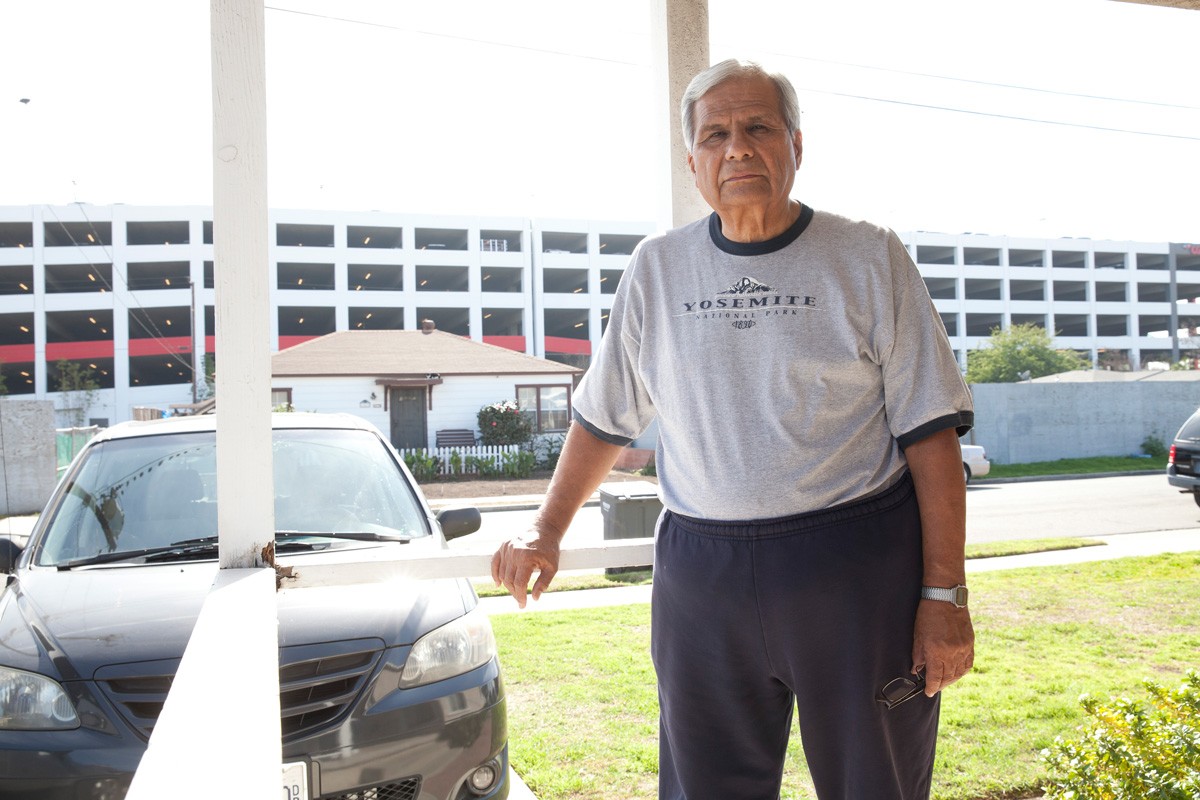
Since its announcement, the Source has carried a sense of mystery. Huge walls shield it from view at the intersection of Beach Boulevard and Orangethorpe Avenue. A few potted plants rest on the outer rings of the main plaza that serves as its center; three levels of future retail, entertainment and fine-dining destinations swirl upward from this vortex.
There has been no grand-opening announcement or disclosure of all the tenants. But the Source hopes to gradually introduce itself to Southern California, starting in 2017 with the third-floor plaza. An international food court is fully built out, ready to serve up the best of Gong Cha, Qrious Palate, Poki Yo, Sung Sim Dang and, last but not least, Popeyes Chicken. “This is the first Popeyes in a food court since 1991,” says Kenny Liu, lease manager for M+D Properties. Wearing a blue long-sleeved shirt neatly rolled to the elbows, he’s leading a tour of the plaza.
The Source’s finer dining destinations are still under construction. As Liu walks and talks, a painter sprays the interior walls of what will be La Huasteca, a Mexican restaurant owned by the Source developers Min and Donald Chae, brothers who also developed the Plaza Mexico shopping center in Lynwood. Banners are draped over future storefronts that promise dining experiences from South Korea’s Gangnam House, China’s Ooak Vegetarian Fusion Kitchen, Samgeori Butchers and a hot-pot restaurant.
[

In the backdrop of the unfinished Hilton hotel is CGV Cinemas. The steampunk-styled brick building takes its inspiration from Germany’s Hamburg-Altona rail station, but the theaters are the real attraction. “They’re actually in the top five theater chains in the world,” Liu says of CGV, a South Korean company seeking a niche market in the States. “They own all the technological rights and licenses for futuristic cinematic experiences.”
On the second floor, luxury boutique shops and more affordable dining options await. Only Yoshiharu Ramen and You & Me Jewelry are ready to go; thin boards cover much of the curvaceous floor plan designed by the architects behind LA’s Staples Center.
Down giant concrete steps and back to the main plaza, murals cover walls that will eventually be glass storefronts. Pegs on square spaces await LED video screens that will complete the Source’s aesthetic. “It’s going to be full video-commercial advertising,” Liu boasts. “Think L.A. Live, Las Vegas and New York’s Times Square!”
After the tour, on the fifth floor of the Source’s seven-story office building, M+D Properties employees chat in office meetings and cubicles. Wanamaker sits at a pentagon-shaped table in a large conference room; a white, plastic model of the Source rests in the middle. This office building is Buena Park’s tallest, with a required helipad; it easily dwarfs the city’s previous, non-roller-coaster summit, the steeple at St. Pius V Catholic Church across the street. “As a developer, I’ve worked in numerous other cities,” Wanamaker says, “but Buena Park is very business-friendly.”
M+D knows. For a decade, the company has tried to build something on Beach and beseeched the city to help out. In 2007, the company sponsored a project called the “Beach and Orangethorpe Mixed Use Development.” The following year, an M+D representative promised the planning commission its potential was that of “South Coast Plaza, Rodeo Drive and the Beverly Center” during public hearings and would attract six-figure-income homes within a 10-mile radius of Buena Park.
By 2010, M+D called the project the Source, and then-Assistant Economic Development Director Ruben Lopez pitched a redevelopment deal to the City Council that gifted M+D nearly an acre of land that the city previously bought from a former motel and car wash for $5.3 million. Built-in subsidies also tacked on 100 percent property-tax rebates through 2030, as well as 55 percent sales-tax rebates over a 30-year period, amounting to $50 million. The council unanimously approved.
The Source easily dominated campaign contributions that year—around the same time Donald Chae admitted to laundering money in a Los Angeles City Council race, earning him a $27,500 fine in 2015 from the city’s Ethics Commission—in hopes of maintaining a supportive council. All current members, save for Mayor Elizabeth Swift, have enjoyed thousands of dollars in Source-related contributions throughout their political careers. The project has poured in at least $44,240 through council races between 2008 and 2016. Councilman Fred Smith is easily the biggest benefactor, with Min Chae dropping $10,000 in one 2011 contribution alone. Nearly $15,000 in related airfare and accommodations through Korea Travel International also appear on Smith’s campaign-disclosure forms from 2010 to 2012, all for trips to China with developers to court prospective investors. (Developers deferred to department heads for interviews. Smith ignored requests for comment.)
The Source will be worth all the effort, its political boosters claim. “Both the Chaes are very much visionaries,” says Mayor Pro Tem Vaughn, who received $3,000 from the Source in 2014. She admits nearby residents haven’t had the best situation on their hands, though. “I know I wouldn’t want to live there, but they made a choice to stay,” she says. “If there’s a problem, and if it’s not being addressed, I want the Source held accountable.”
* * * * *
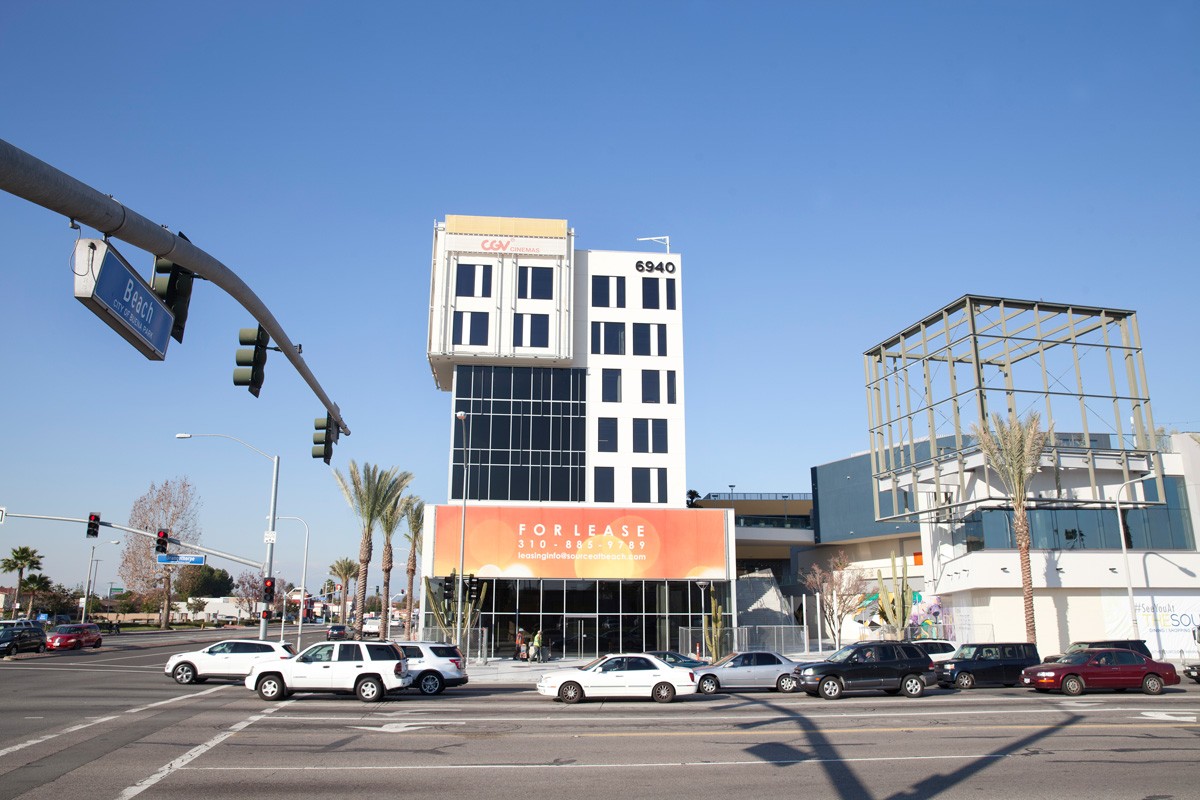
A giant exclamation point marks Buena Park’s northern city limits from the median along the main stretch of Beach Boulevard. The former Highway 39 has been the bedroom community’s lifeblood since Walter and Cordelia Knott arrived in 1920 and transformed their roadside berry stand into America’s first theme park. Multiple tourist traps have come and gone over the decades, from the Japanese Village and Deer Park to Movieland Wax Museum and Ripley’s Believe It or Not! to Medieval Times and Pirate’s Dinner Adventure.
But for the past decade, Buena Park decided to court food and lifestyle concepts that tourists, residents and people from across Orange County and Southern California could regularly visit. The strategy started in 2005 with the successful opening of Portillo’s, a Chicago hot dog chain. Rock icons Gene Simmons and Paul Stanley of KISS opened Rock & Brews in late 2015. More new arrivals are slated to come, including this month’s highly anticipated opening of the first OC location of ultra-popular Cuban chain Porto’s Bakery & Café. “Porto’s by itself generates 2.5 million people in Downey; that’s a lot of people,” says Lopez, now the city’s Economic Development Administrator, from his meeting office, which is decorated with a wall-sized map of the city. “Buena Park has always been looked at as a second option for tourists, the first being Disneyland.” Lopez doesn’t seek to change that fact, but he wants to give Beach Boulevard a face-lift. “We got rid of six motels. The council gave us direction to go after some of the older motels, and we started buying them off.”
[
When California Governor Jerry Brown dissolved redevelopment agencies in 2012, Lopez says, it left Buena Park with heavy revenue losses. The city had to quickly unload its parcels to avoid financial catastrophe. “We have been more successful than others in attracting what we wanted,” Lopez says. It hasn’t hurt that the city subsidized $32 million in land sales for new developments. Most recently, the city found a taker for the 8.7-acre Movieland Wax Museum site in developer Rubin Stahl, who paid just $2.5 million for the property on which he plans to open Butterfly Palladium this year. Lopez expects the atrium to attract an additional million people per year.
* * * * *
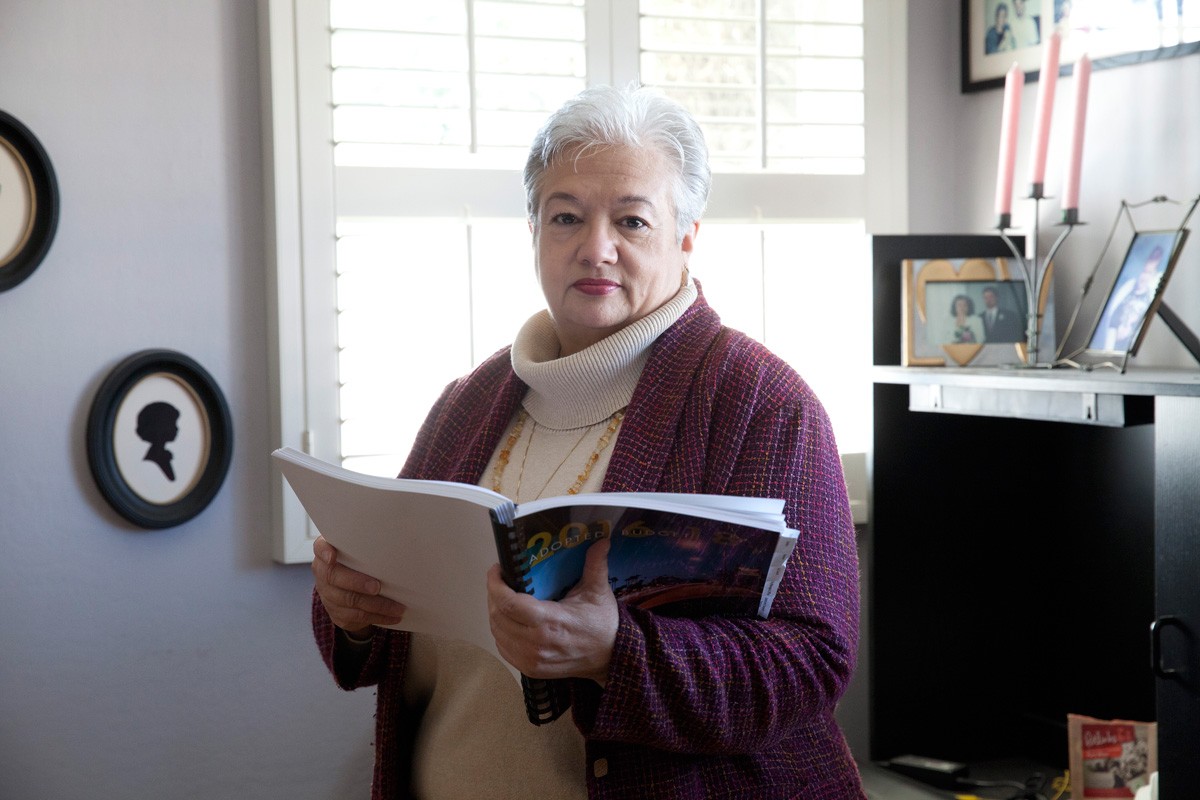
When the Source didn’t have anything finished by fall 2014, the city negotiated to extend the deadline to the following September in exchange for a $1.85 million loss of subsidies over five years. “Failure to complete the project,” the resolution states, “will substantially increase the costs of developing the subject site with any project of any sort due to costs related to demolition and renewed site preparation.”
Last year, the City Council approved plans to build the Aloft and Stanford hotels to join the Source Hilton Hotel on Beach, but without bed-tax giveaways that have been standard incentives in rival Anaheim. Stanford, a boutique chain owned by the same Seoul-based company behind the H-Mart farther north on Beach, is the latest Korean business to arrive in Buena Park.
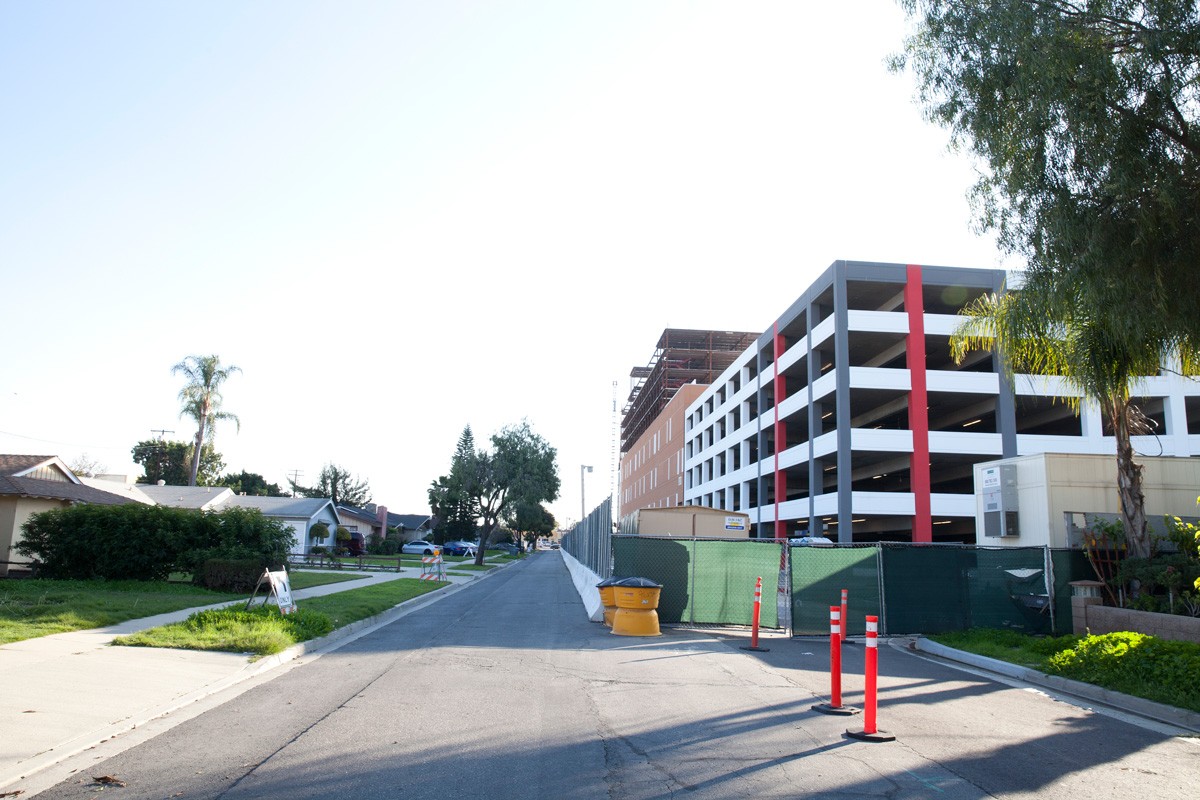
Koreans comprise around 10,000 of Buena Park’s residents, large enough to host an annual Arirang multicultural festival at City Hall, with parking provided by the Source’s 1,700-stall lot. “I look at the Source as a signature development that will be a hub of the Korean-American community of North OC,” says Buena Park resident and prominent community member Dr. Jinha Park. “Korean-Americans are very business-orientated, and a development like the Source will enhance the quality of life for all the citizens of Buena Park.”
It’s a view shared by Lopez. When asked if an OC Koreatown is forming in the city, he responds, “I don’t know that the Koreans are looking to separate themselves. I think they want to be a part of the fabric of Buena Park.”
“As a result of the Source going up, you see Porto’s, the Butterfly Palladium, the Aloft and Stanford hotel coming,” says Wanamaker. “It’s a ripple effect for development.”
And it’s a concept that’s looking to expand in future years. “What you’ll probably end up seeing down the road, if it’s extremely successful, as we think it’s going to be,” Lopez says, “is the Source expanding all the way to Stanton Avenue and north all the way to where City Hall is.”
The only problem is the dozens of homes in the way.
* * * * *
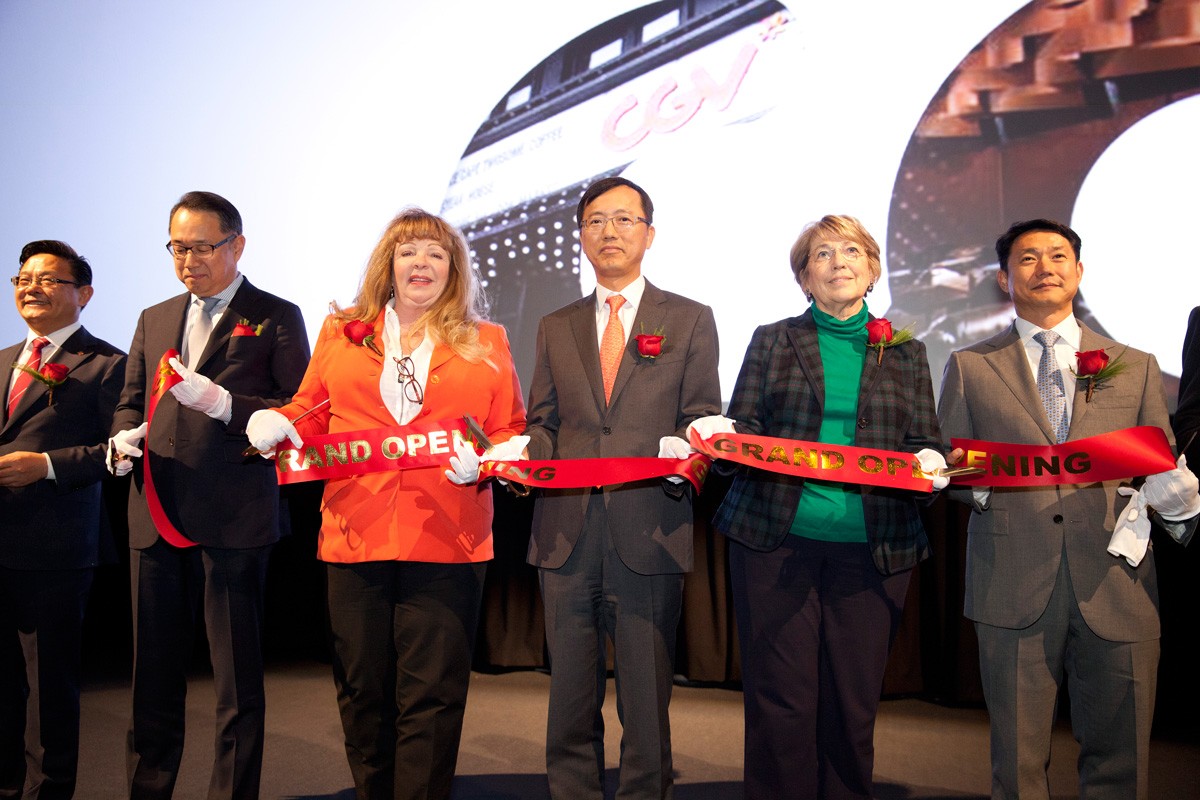
South of Knott’s, half a dozen Buena Park residents gather in Susan Sonne’s living room to discuss how to hold City Hall accountable. “We all found each other during the [2016 general] election,” Sonne says. The progressive challenged Fred Smith on the November ballot, finishing a distant second in the 3rd District, which lies just outside the Source. On whether big money influenced the outcome, she remarks, “I raised $7,000, and Smith raised over $60,000, so you tell me.”
Before deciding on a late run for council, the Source came up in casual conversations Sonne had with neighbors. She joined Nextdoor Buena Park, an online communuty on which people posted comments asking when the center would open and chiding it for being “really ugly.”
The activist started attending council meetings. “I remember being at a meeting when Vaughn said, ‘I want to light up Beach Boulevard from the 5 freeway to Crescent Avenue,'” Sonne says. “The image I got in my mind was of a little Las Vegas, although I think it’s more correct to say a little Anaheim.”
Sonne’s new group, Buena Park United, didn’t form specifically in response to the Source, but it’s hard to ignore the big player in town. While members come from all districts in Buena Park, none yet is from the Melrose-Brenner neighborhood next to the Source that the city and M+D want gone. The developer planned to buy out all homes around its project before starting construction, but it was only successful in fully clearing out the west side of Brenner Avenue. “I requested a meeting back in 2008 because the residents wanted to know what was going on,” says Rodriguez, who moved into his home in 1998. M+D gave a presentation and offered a question-and-answer session afterward.
[
The developers made a formal offer on Rodriguez’s home that year for $100,000 above its appraisal value. He found a new home, signed the paperwork, but he says the deal fell apart when investors pulled their funding from the Source. Since then, Rodriguez’s home value has veered from $525,000 all the way down to $290,000 before settling at just less than $400,000. Most residents are resigned to the fact the neighborhood will fade away, but they want the Source to do right by them during construction until agreeable offers on their homes are made.
“I’ve never thought of moving,” says Raymundo Rivera, one of Rodriguez’s neighbors. “When I moved into this house, I planned to stay here for the rest of my life.” He’s apprehensive about the city stepping in with eminent domain and forcing him to sell his duplex at an unfavorable price—a tool Buena Park has yet to use. “I don’t want to leave here for a worse situation.”
Stuck in the middle of the mess is Buena Park Mayor Swift. She recuses herself whenever the Source comes up for council discussions or votes because of how close her home is to it. In May 2016, Swift hosted a meeting at her home at which 16 neighbors listed grievances: a fenced one-way street, homeless squatting in a boarded-up home, rodent infestations, eminent-domain fears. The following day, Swift and two of her neighbors spoke out at City Hall. Councilman Art Brown, a longtime Democrat whose biggest political accomplishment is his impressive Santa Claus beard, promised to withhold approval of future requests from the Source if it didn’t properly address resident concerns. The Source cleaned up its act a bit, but headaches remain.
Even if the Source is a good neighbor, Sonne says, city officials need to answer questions about traffic impact, air quality, noise pollution and the kinds of jobs rapid development along Beach Boulevard will bring. She plans to livestream study sessions at which council moves discussions on important civic matters such as the Source to another room, ones that aren’t video archived.
To awaken residents from their small-town slumber, Sonne’s multiethnic, multigenerational Buena Park United also wants to start a blog that keeps tabs on City Hall. “It’s possible that more voters in Buena Park will become active, especially as we work to make information more accessible,” Sonne says. “Changes will start coming. That’s what we’re here for.”
* * * * *
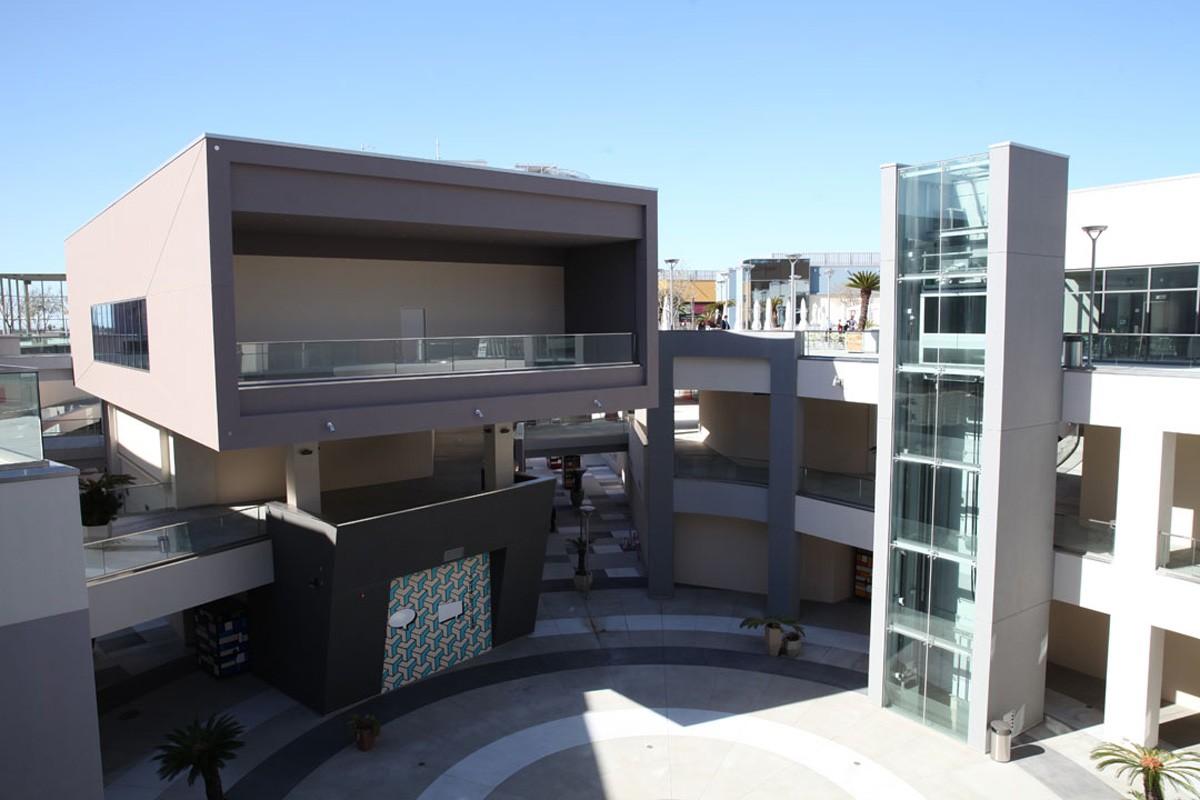
In late January, businessmen toasted champagne glasses in the lobby of CGV Cinemas. After five long years, the movie theater is the first business at the Source to host a grand opening. When casual conversations died down, the VIP guests slowly filed into a theater, leaving no seat empty for the ceremony that ran behind schedule. Buena Park City Council members, M+D employees and elected official staffers claimed the front rows; Hollywood film-industry types and other invitees, mostly Korean, filled up the rest.
The program began with Swift saying a few words before presenting M+D with a certificate on behalf of the city. “We’re just thrilled to have a new business in Buena Park,” she said. “As you invite the community here to your theaters, we want to invite you to enjoy Buena Park. Meet our neighbors; actually, if you walk outside of this theater about 50 feet, you’ll run into my house.”
The crowd laughed.
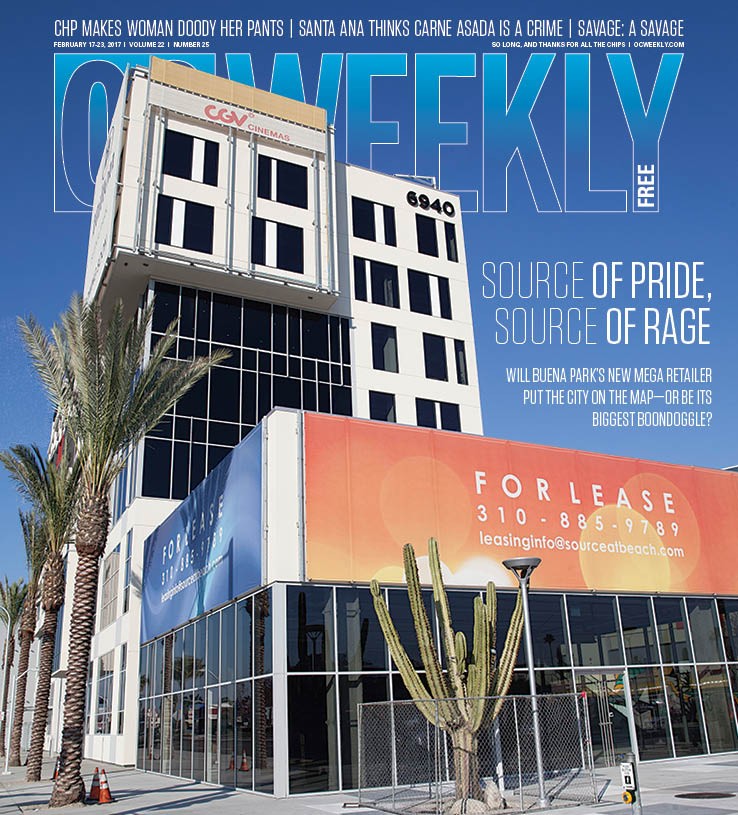
A short presentation on CGV followed, promising a “revolution in cinema.” The chain’s futuristic technology wants to transform moviegoing into a multisensory experience. Its 4DX theater (one of only five in the United States, according to the company) infuses motion, vibration, fog, scents and wind to accentuate action films. CGV Cinemas has hundreds of locations around the world, but its newly opened theaters at the Source serve as the flagship in America. “I think audiences in the U.S. will embrace it,” Paul Richardson, CJ CGV America CEO, told the crowd.
Wanamaker, council members and CGV representatives wore white gloves and red roses on their lapels as they prepared for the ribbon cutting. Each took a golden pair of scissors on a count of three, then cut through the fabric to applause. With the festivities finished, people returned to the lobby, plucking treats off trays and enjoying another round of drinks. Everyone received gift bags filled with a DVD, a microwavable dish of bibimbap, a CGV gift card and two 4DX-movie vouchers.
[
More ribbon-cutting ceremonies are scheduled for this year. “The Source will put us right on the map, like Downtown Disney,” Vaughn said. “We will shine as the ‘Jewel of the Southland.'”
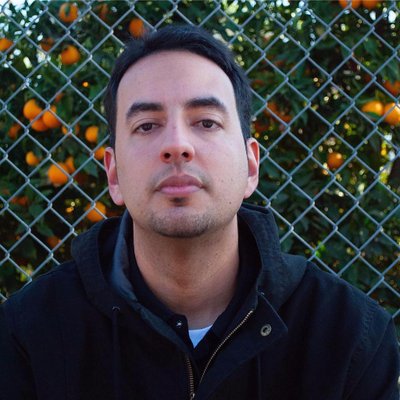
Gabriel San Román is from Anacrime. He’s a journalist, subversive historian and the tallest Mexican in OC. He also once stood falsely accused of writing articles on Turkish politics in exchange for free food from DönerG’s!


CBD exceeded my expectations in every way thanks https://www.cornbreadhemp.com/products/cbda-oil . I’ve struggled with insomnia for years, and after infuriating CBD in the course of the key age, I finally practised a full nightfall of pacific sleep. It was like a force had been lifted off the mark my shoulders. The calming effects were gentle despite it intellectual, allowing me to drift slow logically without sympathies groggy the next morning. I also noticed a reduction in my daytime desire, which was an unexpected but allowed bonus. The taste was a fraction earthy, but nothing intolerable. Overall, CBD has been a game-changer in compensation my siesta and anxiety issues, and I’m thankful to have discovered its benefits.